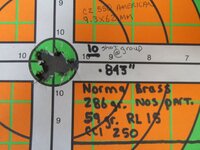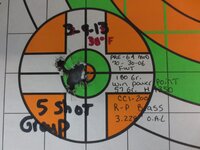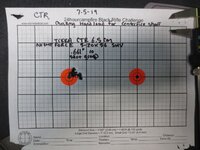Silver Supporter
- Messages
- 1,047
- Reactions
- 2,939
Or is it ballistic witchcraft?
Anyway, a long while ago for long range shooting I got into making the tightest groups possible. I came across lots of literature about barrel harmonics and adjusting for the nodes of accuracy and adjusting etc to develop the optimal charge. (as well as getting the OAL perfect for each rifle)
It greatly helped tighten my groups at long range. And along the way I got to geek out over things like the quickload software and pouring over the website 6mmbr for hours.
My question is, have others come across literature pertaining to improving accuracy.(aside from the shooter)
Software besides quickload that you can geek out over? I wish I could even find the original site I spent days reading about that over but sady I couldn't...
6mmbr still exists:
Most everything I came across was word of mouth at the gun range leading me to web sites from random precision shooters.
Anyway, a long while ago for long range shooting I got into making the tightest groups possible. I came across lots of literature about barrel harmonics and adjusting for the nodes of accuracy and adjusting etc to develop the optimal charge. (as well as getting the OAL perfect for each rifle)
It greatly helped tighten my groups at long range. And along the way I got to geek out over things like the quickload software and pouring over the website 6mmbr for hours.
My question is, have others come across literature pertaining to improving accuracy.(aside from the shooter)
Software besides quickload that you can geek out over? I wish I could even find the original site I spent days reading about that over but sady I couldn't...
6mmbr still exists:
AccurateShooter.com 6mmBR.com -- Best Guide to Precision Shooting and Precision Rifle Accuracy
Best site for precision rifle accuracy and accurate cartridge shooting. AccurateShooter.com 6mmBR.com has 223 243 308 6mm accuracy reloading data. Benchrest, Tactical, Varmint, High Power precision Shooting. Rifle accuracy tips. Scopes optics. Ballistics. Winchester Lapua brass. Match calendar...
www.6mmbr.com
Most everything I came across was word of mouth at the gun range leading me to web sites from random precision shooters.


















